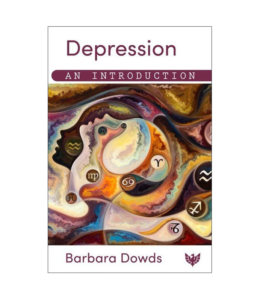
Barbara Dowds is a humanistic and integrative psychotherapist, supervisor and trainer, and lives near Dublin. She is author of Beyond the Frustrated Self (Karnac, 2014) and Depression and the Erosion of the Self in Late Modernity (Routledge, 2018), and contributed to The Divided Therapist (Ed. R. Tweedy, 2020). In a previous life, she was a university lecturer and researcher in molecular biology.
Here Barbara reflects on her motivations for writing her latest book, Depression: An Introduction.
When teaching on therapy training courses, I was always frustrated with and dismissive of the term “depression”: it seemed to refer to such different degrees and types of suffering.
Depression has multiple manifestations, with wide variations in degrees of subjective distress, duration, sudden single or multiple breakdowns, or relatively stable but mild low mood. People’s symptoms can vary greatly. They can be dominated by exhaustion and misery, or irritability and anger, or primarily somatic effects such as digestive disorders, physical pain or fluctuations in weight. Likewise, the causes of depression are multiple and various and there is certainly no blood test that will reveal this condition. It is fair to ask whether there is any point to the term. And, indeed, many clients who are depressed don’t use the D-word. Conversely, some who do are simply judging themselves for failing to meet their life goals. However, these people may become depressed if they don’t see how they objectify themselves by living according to social norms, rather than from their real needs.
 Depression: An Introduction was my way of finding meaning in a term that had disappeared into cliché and an endeavour to explicate its myriad forms. Not all clients suffering from depression can be “cured” by psychotherapy alone but, for many, their depression is both meaningful and transient, and change can emerge if the message it contains is grasped. This book is an exploration of the ways this can be achieved for those clients.
Depression: An Introduction was my way of finding meaning in a term that had disappeared into cliché and an endeavour to explicate its myriad forms. Not all clients suffering from depression can be “cured” by psychotherapy alone but, for many, their depression is both meaningful and transient, and change can emerge if the message it contains is grasped. This book is an exploration of the ways this can be achieved for those clients.
Readers of the book will notice scant reference to Covid-19. The manuscript was substantially completed just as SARS-CoV-2 began spreading in Europe and, in June 2020, I ended my book with a plea for an orientation to hope in my “final thoughts”. At that time, we were still in shock; now we are experiencing a new and restricted way of life, and hope has been replaced by weary resignation.
In my own practice, I have found that the pandemic has amplified whatever was there already: attachment issues, isolation, trauma, hypochondria, fear of death, OCD, conflictual relationships in the home, work stress, job insecurity, poor self-esteem, agoraphobia or claustrophobia – the list is by no means complete – and there is a reported rise in rates of depression and anxiety, which is hardly surprising. What we are encountering is unprecedented loss, whether through extended illness, bereavement, loss of work, face-to-face contact or identity, and loss of hope that our lives will ever return to what we had before. Grieving, which is normally supported by being shared through public ritual, has become a more isolated and internalised experience. Those who live alone are caught in a double-bind: other people, potentially a source of co-regulation, are now also a source of threat, creating a quarantine amalgam of disorganised attachment and solipsism. And yet and yet … most people have adapted and got on with things. Indeed, for some, there may be considerable relief in such limitation and freedom from the tyranny of choice, and also a chance to discover what really matters.
My hope is that Depression: An Introduction will prove to be an indispensable guide for colleagues working in this strange new world with a possible increase in depressed individuals.
Barbara Dowds

